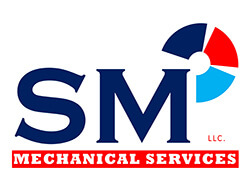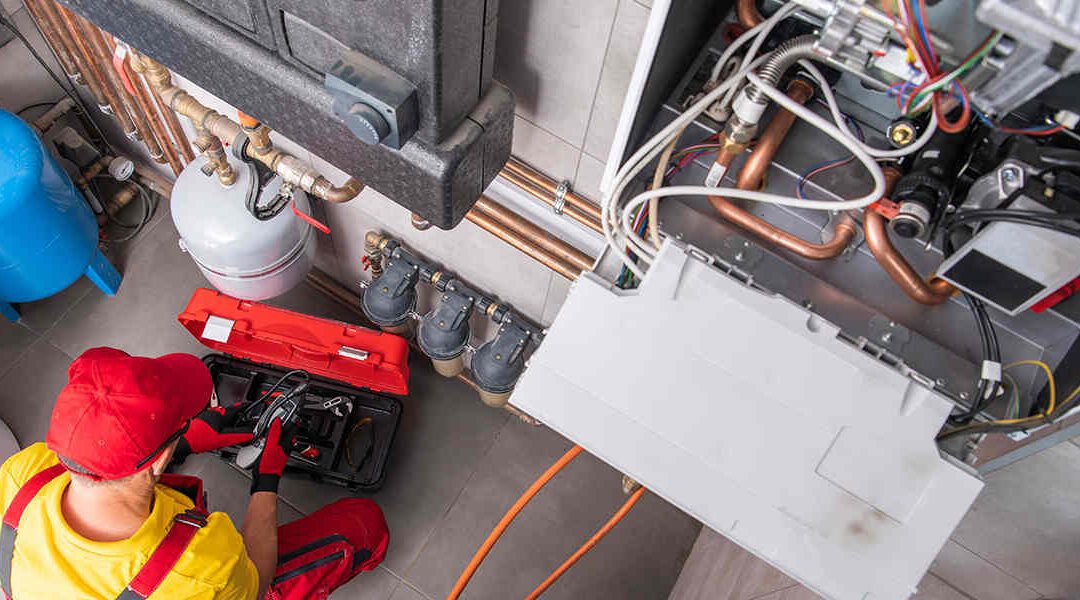Every Connecticut homeowner depends on their furnace during cold weather for indoor comfort and safety. However, even modern heating systems demand vigilant maintenance. With regard to gas furnaces in particular, the ongoing risk of carbon monoxide leaks requires close attention all year long.
Can a furnace leak carbon monoxide when turned off? The short answer to that question is “yes,” and in the following material, SM Mechanical Services LLC, the company with top-ranking furnace repair in Glastonbury, CT, discusses how to be aware of this issue and to prevent harm.
Can a Furnace Leak Carbon Monoxide When Turned Off?
Even when not actively heating your home, your furnace can still leak carbon monoxide (CO) if there are underlying issues. Virtually impossible to detect promptly without proper equipment, the gas is colorless, odorless, and potentially deadly.
Ventilation issues, a cracked heat exchanger, or a blocked flue vent can all lead to carbon monoxide leaks into your living space — even after the furnace shuts down. The risk increases, however, during Connecticut’s long winter and cold weather season.
Recognizing the Signs of a Gas Leak in Glastonbury
While carbon monoxide itself is odorless, other gases often involved with gas leaks may be easier to detect.
Utilities add the chemical methyl mercaptan to natural gas as a leak warning agent. The additive produces the classic rotten egg smell associated with hazardous leaks of highly flammable natural gas. Hissing sounds around gas lines and furnaces are also strong indicators of a gas leak.
While carbon monoxide doesn’t have an odor on its own, you should never ignore any physically detectable signs of any leaks. Heavy condensation on windows, stuffy indoor air, and a yellowish-burning pilot light can all indicate the presence of carbon monoxide.
There are some other physical symptoms involving your heating system itself that can indicate issues with escaping carbon monoxide.
Flue Vents and Ventilation Issues
Can a furnace leak carbon monoxide when turned off? Impaired ventilation can certainly create a leaking risk.
A furnace’s flue vent expels harmful gases, including carbon monoxide, from the heating system into outdoor air. However, debris, bird nests, and snow and ice can block the vent.
Even after the furnace stops operating, residual gases can build up behind a blockage. Changes in humidity and barometric pressure can cause carbon monoxide to backflow into your home.
It’s essential to regularly check flue vents to ensure they are open and allow unrestricted outward ventilation.
Heat Exchanger Problems
A furnace’s heat exchange absorbs the heat produced in the combustion chamber and transfers it to the air circulated into your home. Another critical function of this component is separating toxic combustion byproducts from the air entering your living space — including carbon monoxide.
Wear and tear can eventually lead to heat exchanger malfunctions, especially in older furnaces. After your furnace shuts down, residual toxic gases can escape through a damaged heat exchanger.
The Impact of Ventilation Issues
The “V” in HVAC stands for ventilation — the key to heating safety. Poor ventilation exacerbates carbon monoxide risks in your home. Blocked flue vents or other ventilation components can allow toxic gases to accumulate and flow inside your living space.
Home construction methods in our region can aggravate this risk. Our homes are tightly sealed to conserve heat. That insulation is essential, but it points out the critical nature of inspecting ventilation systems.
The Role of Carbon Monoxide Detectors
As the discussion above demonstrates, it’s virtually impossible to rely on our senses alone to detect hazardous carbon monoxide leaks. Every Glastonbury home should have a reliable, modern carbon monoxide detector, particularly those with any gas-powered appliances, as carbon monoxide can be dangerous.
Whereas we cannot smell or see carbon dioxide, properly calibrated sensors activate immediately upon detecting its presence all the time, and not just when your furnace is operating.
An expert HVAC technician should strategically place detectors and regularly test them during routine maintenance visits.
Can a furnace leak carbon monoxide when turned off? Since it can, we urge you to invest in reliable detection systems.
Symptoms of Carbon Monoxide Poisoning
Common immediate symptoms of carbon monoxide poisoning include headaches, weakness, nausea, and confusion. Most of the time, promptly removing a person affected by the carbon monoxide source will alleviate the symptoms.
However, high levels of carbon monoxide inhalation can be deadly in some cases after only a few minutes of exposure. Severe cases of poisoning can require hyperbaric oxygen therapy or pure oxygen treatments.
Low-level carbon monoxide exposure over extended periods can cause neurological issues, including difficulty concentrating, impaired memory, cognitive decline, and Parkinsonian symptoms in severe cases.
Medical experts recommend immediate medical examination and treatment for suspected carbon monoxide poisoning.
Furnace Inspection and Maintenance in Glastonbury, CT
The best preventative care against carbon monoxide leaks comes through regular expert furnace inspection, maintenance, and cleaning. Licensed HVAC professionals can check for typical problems like damaged heat exchangers and blocked or clogged flue vents.
Due to Connecticut’s seasonal weather, which includes damp and cold winters, regular HVAC maintenance is essential to energy efficiency and safe operation.
Count on SM Mechanical Services LLC for Safe and Reliable Furnace Maintenance
Don’t leave dealing with potential carbon monoxide leaks up to chance. Hire professionals who can ensure your furnace is operating safely and address potential issues before they become dangerous.
At SM Mechanical Services LLC, we specialize in furnace inspections, repairs, and maintenance, along with installing and maintaining state-of-the-art carbon monoxide detectors. We offer the expertise and service you need to keep your furnace running safely. Our team works hard to educate every customer on basic safety protocols, and we invite you to look at our other blog posts on topics like “Should furnaces be hot to touch?”
Can a furnace leak carbon monoxide when turned off? Unfortunately, the answer is yes. Carbon monoxide is a silent and deadly gas, but with the right precautions, you can protect your family.
Don’t wait for an emergency to strike. Contact us at SM Mechanical Services LLC today for comprehensive indoor comfort services in Glastonbury, Connecticut.

